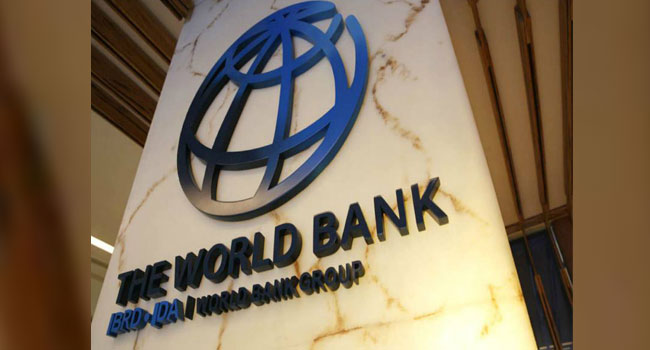Abuja, Nigeria — As Nigeria grapples with one of the most severe public health crises in the world, the World Bank is preparing to approve a $250 million concessional loan aimed at strengthening the country’s fragile health security systems. The financing, expected to be greenlit on September 23, 2025, forms part of the third phase of the Health Security Programme in Western and Central Africa.
If approved, the funds will be channelled into improving Nigeria’s capacity to prevent, detect, and respond to public health emergencies, with an emphasis on regional collaboration, disease surveillance, laboratory upgrades, and emergency preparedness.
A Nation in Critical Condition
According to the World Bank’s appraisal document, the intervention is urgently needed. Nigeria—Africa’s most populous nation with an estimated 223 million people—faces devastating health indicators:
-
Life expectancy: Just 54 years.
-
Maternal mortality: Over 1,000 deaths per 100,000 live births—among the highest in the world.
-
Under-five mortality: 114 per 1,000 live births, translating into more than 800,000 child deaths annually.
The report also warns of a growing antimicrobial resistance crisis, responsible for over 64,500 deaths in 2019 and linked to 263,000 more. Six of the country’s top ten causes of death are infectious diseases—including malaria, HIV/AIDS, tuberculosis, and diarrhoeal illnesses—compounded by poverty, inadequate infrastructure, and chronic underfunding.
The Economics of a Health Emergency
The scale of Nigeria’s health financing gap is staggering:
-
Public healthcare spending is just 0.62% of GDP—one of the lowest rates globally.
-
Only $14 per capita is allocated annually, with less than $3 going to primary healthcare.
-
Households shoulder over 76% of health expenses out-of-pocket, making care inaccessible to millions.
Meanwhile, 120 million Nigerians—54% of the population—live below the poverty line, limiting their ability to pay for medical services. Climate-related disasters, expected to cause $399 billion in health-related economic losses by 2050, threaten to worsen this picture.
Loan Details and Implementation
The $250 million facility will be issued through the International Development Association (IDA), the World Bank’s concessional financing arm, with the Federal Ministry of Finance as borrower and the Nigeria Centre for Disease Control (NCDC) as project manager.
Planned investments include:
-
Disease surveillance integration between human and animal health platforms.
-
Upgraded laboratory networks and emergency operations centres in all 36 states and the FCT.
-
A national warehouse for emergency medical supplies.
-
Strengthened pharmaceutical regulation and promotion of local medicine manufacturing in partnership with NAFDAC and the National Institute for Pharmaceutical Research and Development.
-
Gender-sensitive epidemiological training to increase women’s participation in health leadership.
A multi-layered project governance structure will oversee the programme, with a National Project Coordination Unit at NCDC reporting to a National Steering Committee chaired by the Coordinating Minister for Health. States wishing to participate will have to meet eligibility criteria including counterpart funding and adoption of national health security policies.
Persistent Gaps in Preparedness
Nigeria’s 2023 Joint External Evaluation score for International Health Regulations core capacities rose to 54%, up from 39% in 2017—showing progress, but still reflecting serious shortcomings:
-
Inadequate legal frameworks.
-
Limited geographic reach of disease detection systems.
-
Weak emergency response logistics at state and local levels.
-
Fragmented surveillance across human, veterinary, and environmental health.
The new World Bank loan is designed to address these systemic weaknesses, but the environmental and social risks of implementation have been rated as “substantial” due to governance challenges and the complex coordination required between multiple sectors.
The Debt Picture
The loan, if approved, will add to Nigeria’s already heavy debt burden. According to Debt Management Office (DMO) data:
-
Nigeria’s total debt to the World Bank stood at $18.23 billion as of March 31, 2025—up $420 million from December 2024.
-
IDA loans account for $16.99 billion of this figure, while the non-concessional International Bank for Reconstruction and Development (IBRD) share remains at $1.24 billion.
-
The World Bank Group now holds 39.7% of Nigeria’s total external debt and 81.2% of its multilateral debt.
This underscores the central role of the World Bank in Nigeria’s development financing, but also raises questions about the country’s growing dependence on multilateral credit.
Why This Loan Matters Now
Public health experts warn that without urgent investment in health security, Nigeria risks repeating the devastating experiences of Ebola and COVID-19, when slow detection, limited laboratory capacity, and weak coordination worsened the human and economic toll.
The proposed $250 million loan is being seen by stakeholders as a make-or-break opportunity to create a sustainable emergency response system that can prevent localized outbreaks from becoming nationwide or regional crises.
However, analysts caution that money alone will not solve the problem. Implementation will require political will, accountability, and community-level engagement to bridge the trust gap between health institutions and the public.




